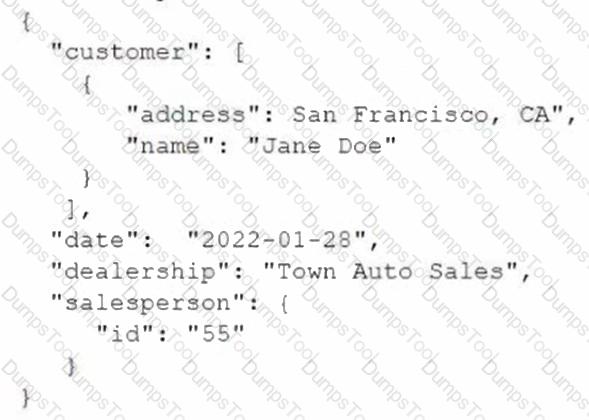Which of the following are best practice recommendations that should be considered when loading data into Snowflake? (Select TWO).
Query compilation occurs in which architecture layer of the Snowflake Cloud Data Platform?
What happens to the underlying table data when a CLUSTER BY clause is added to a Snowflake table?
When reviewing the load for a warehouse using the load monitoring chart, the chart indicates that a high volume of Queries are always queuing in the warehouse
According to recommended best practice, what should be done to reduce the Queue volume? (Select TWO).
True or False: Query ID’s are unique across all Snowflake deployments and can be used in communication with Snowflake Support to help troubleshoot issues.
Which of the following objects can be directly restored using the UNDROP command? (Choose two.)
What versions of Snowflake should be used to manage compliance with Personal Identifiable Information (PII) requirements? (Choose two.)
What is the SNOWFLAKE.ACCOUNT_USAGE view that contains information about which objects were read by queries within the last 365 days (1 year)?
The bulk data load history that is available upon completion of the COPY statement is stored where and for how long?
Which of the following terms best describes Snowflake’s database architecture?
True or False: Snowflake’s data warehouse was built from the ground up for the cloud in lieu of using an existing database or a platform, like Hadoop, as a base.
True or False: Snowflake charges a premium for storing semi-structured data.
The number of queries that a Virtual Warehouse can concurrently process is determined by:
Choose 2 answers
What are the three things customers want most from their enterprise data warehouse solution?
Choose 3 answers
True or False: A Virtual Warehouse consumes Snowflake credits even when inactive.
Which semi-structured file formats are supported when unloading data from a table? (Select TWO).
Which is the MINIMUM required Snowflake edition that a user must have if they want to use AWS/Azure Privatelink or Google Cloud Private Service Connect?
In which scenarios would a user have to pay Cloud Services costs? (Select TWO).
A marketing co-worker has requested the ability to change a warehouse size on their medium virtual warehouse called mktg__WH.
Which of the following statements will accommodate this request?
What happens when a cloned table is replicated to a secondary database? (Select TWO)
Which URL type allows users to access unstructured data without authenticating into Snowflake or passing an authorization token?
The following JSON is stored in a VARIANT column called src of the CAR_SALES table:

A user needs to extract the dealership information from the JSON.
How can this be accomplished?
Which of the following are best practices for loading data into Snowflake? (Choose three.)
A user is preparing to load data from an external stage
Which practice will provide the MOST efficient loading performance?
What types of data listings are available in the Snowflake Data Marketplace? (Choose two.)
Assume there is a table consisting of five micro-partitions with values ranging from A to Z.
Which diagram indicates a well-clustered table?
Which of the following are valid Snowflake Virtual Warehouse Scaling Policies? (Choose two.)
What happens when an external or an internal stage is dropped? (Select TWO).
What feature can be used to reorganize a very large table on one or more columns?
Which of the following conditions must be met in order to return results from the results cache? (Select TWO).